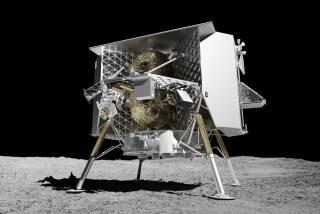Burned Up Over a Detail
- Share via
It was the classic bad day at the office. In fact, it was a bad day in the solar system.
NASA’s $125-million Mars Climate Orbiter, the first spacecraft designed to study the climate of another planet, has been lost. After a journey of 461 million miles, the spacecraft entered Mars orbit about 60 miles off course, a lot, given the precision that space missions demand. It’s believed the errant craft then either burned up or popped back into space and is now orbiting the sun, whose climate doesn’t need studying since everyone already knows it’s really hot.
So what went wrong? What we have here, as the old movie tag line put it, is a failure to communicate. It seems that Lockheed Martin Astronautics in Denver, which designed and built the spacecraft, used good old English to send key information to the Jet Propulsion Laboratory in Pasadena, which was guiding the orbiter toward its rendezvous with Mars. Specifically, it provided vital data on acceleration in terms of inches, feet and pounds.
Thus when Lockheed relayed data about the energy needed to fire the orbiter’s thrusters it used pound-seconds. But JPL engineers, who have a sterling record in space navigation, weren’t used to thinking in those terms. As science these days generally requires, they were thinking in metric measurements, notably in something called newton-seconds. We learn there’s a major difference between pound-seconds and newton-seconds, big enough in this case to kick the orbiter disastrously off course, and certainly big enough so that someone early on should have spotted the error.
Some embarrassments are soon blessedly forgotten. This one, so simple and so avoidable, seems fated to be enshrined in physics textbooks for generations to come.
More to Read
Sign up for Essential California
The most important California stories and recommendations in your inbox every morning.
You may occasionally receive promotional content from the Los Angeles Times.










